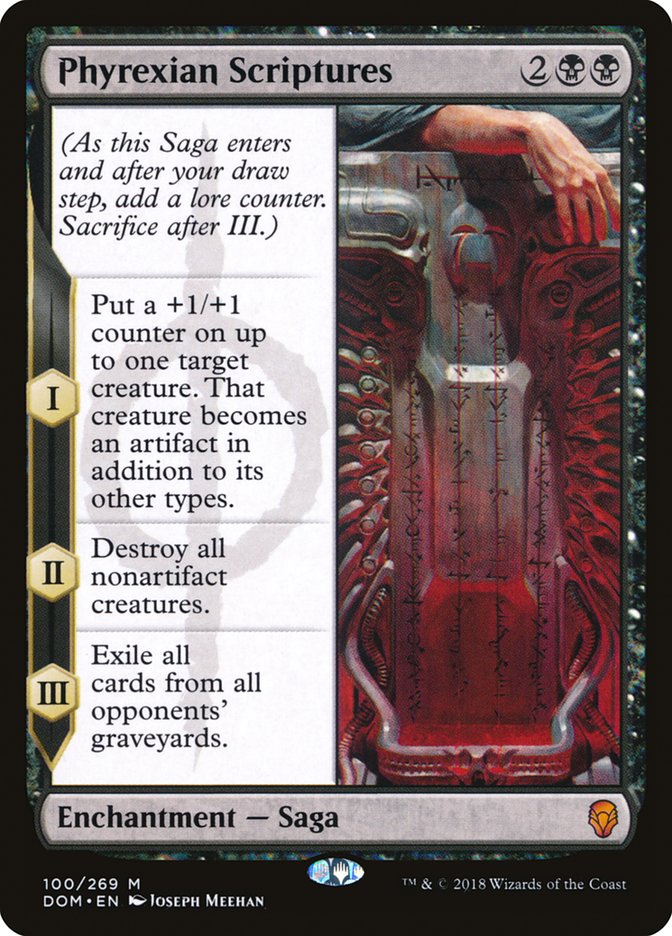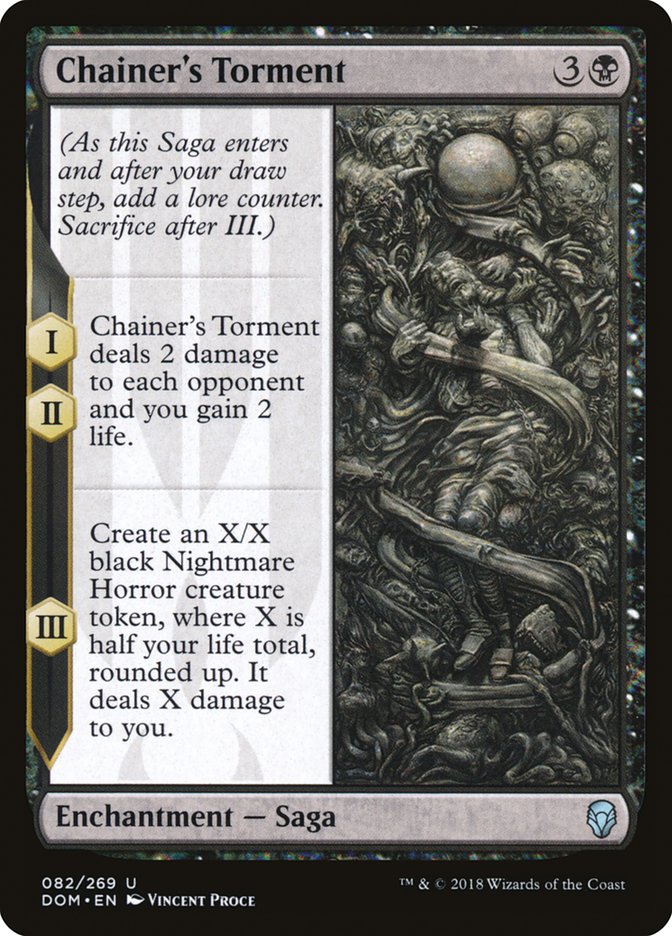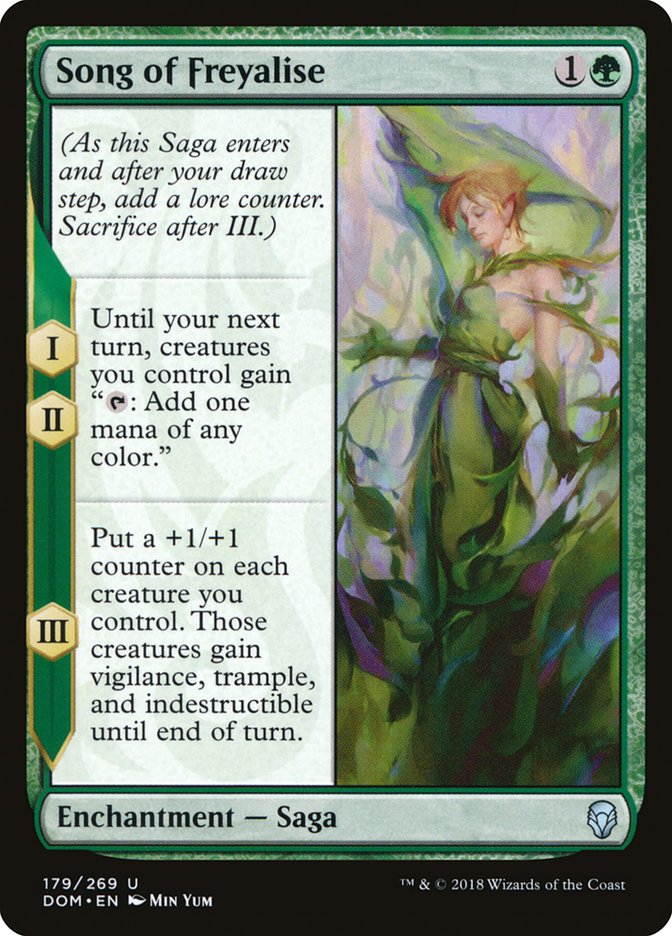With Dominaria around the corner, it’s time to begin evaluating the new cards and mechanics. Whenever there’s an entirely new mechanic, it can be quite hard to understand how the cards will play out and how to properly evaluate them. It’s important to come up with useful heuristics to apply for such evaluations. Today, I will go through an approach for evaluating cards in Limited and apply that to Sagas.
Sagas are enchantments that have effects for the turn you cast them as well as the following two turns. Note: This may not hold true if you have a way to manipulate the lore counters or your opponent can remove the enchantment, but we will assume it does, as neither is a common scenario in Limited.
It’s reasonably intuitive to understand how the cards are intended to play out. For The Mirari Conjecture, you are supposed to get back two spells and then reap the rewards on the third turn. Phyrexian Scriptures first puts a +1/+1 counter on a creature and then blows up the battlefield while the buffed creature is protected.
In Limited, while both cards are inherently powerful, I expect Phyrexian Scriptures to be much better than The Mirari Conjecture based on the first evaluation heuristic:
Optimization Difficulty
Each Saga asks something of you, and how much it asks is key to any evaluation. One theoretical understanding of Limited deck construction is as an optimization problem: maximize the potency of each card in your deck in a way that facilitates playing — or winning — a game of Magic.
If you can optimize for a card without harming the ability for your deck to function, that card will likely be good.
Considering The Mirari Conjecture in this light, you need an abundance of spells (both instants and sorceries) to maximize the card. This is not trivial to do while keeping a Limited deck with a cohesive winning strategy, and so the card isn’t likely to be worth a slot in the majority of Limited decks. By contrast, Phyrexian Scriptures really only asks you to play Swamps and creatures, which is trivial for many Limited decks.
But these cards are rares with very clearly powerful abilities. What about Sagas that we are more likely to see in a draft?
Looking at both of these cards, which asks less of you? Chainer’s Torment asks almost nothing. It drains for four and then puts a (preferably large) creature onto the battlefield. Song of Freyalise wants you to have a variety of creatures on the battlefield, which isn’t all that difficult. The first ability helps cast a bunch of creatures, while the second one is a nice mini-Overrun effect.
Song of Freyalise doesn’t ask much, but it does ask more than Chainer’s Torment. However, I believe Song of Freyalise is a better card in Limited than Chainer’s Torment (although I don’t think either is all that great). As per usual with card evaluation, one heuristic doesn’t get the job done. Compounding different ways of understanding cards often yields a more robust evaluation.
Post-Optimization Power
The previous heuristic posed the question, “How easy is it to include this card in my deck?” Once this question is answered, the natural follow-up question is, “Assuming that the card is a reasonable inclusion in my deck, how good is it?” The combination of these two questions is a reasonable way to evaluate many cards, including Sagas.
Personally, I don’t believe what Chainer’s Torment provides is particularly valuable. Four mana is a lot for a card that doesn’t affect the battlefield for multiple turns, and while it makes a creature later on, your opponent can influence the size of that vanilla creature.
For Song of Freyalise, the mana cost is cheap, and if you have follow-up plays, it’s pretty much free. Furthermore, the final effect can really swing the game. I think the gap between how easy it is to optimize for these Sagas is reasonably smaller than the gap between how powerful they are. While you may not agree with that assessment, it displays a method for evaluating such cards in general.
Enchantment – Saga
3U
(As this Saga enters and after your draw step, add a lore counter. Sacrifice after III.)
I, II — Look at the top five cards of your library. You may reveal an artifact card from among them and put it into your hand. Put the rest on the bottom of your library in a random order.
III — Artifacts you control become artifact creatures with base power and toughness 5/5 until end of turn.
I’ll leave you with a task: evaluate the card The Antiquities War. It requires you to have a reasonable amount of artifacts, but once you do, it can draw a couple of spells and double back as a finisher two turns later. How hard is it to build a deck in which the card is maximized, and is that difficulty worth the payoff?




